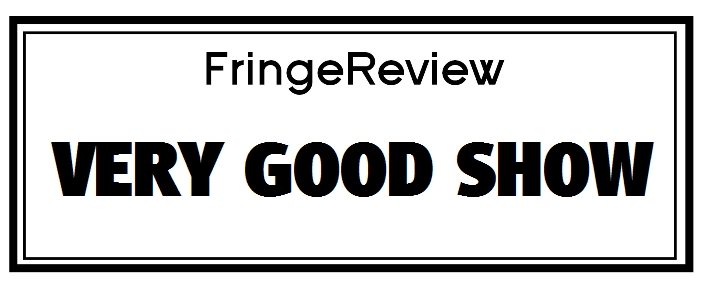FringeReview UK 2018
Mary Thomas and Muriel Hart Songs
Mary Thomas and Muriel Hart

Genre: Live Music, Music
Venue: St Nicholas Church, Dyke Road, Brighton
Festival: FringeReview UK
Low Down
Mary Thomas and Muriel Hart perform songs by Haydn, Schumann, Lehman, Britten and Vaughan Williams, and arias by Puccini and Bernstein.
Review
Mary Thomas and Muriel Hart are a seasoned duo. Hart is legendary throughout the south for her versatility, rock-solid technique and activity as pianist and conductor. Her MBE is more than just richly deserved. She’s been active since the 1930s. That’s right. She’s 94 and indefatigable.
Thomas isn’t anything like as venerable, but still projects a pure lyric soprano voice. She has been a dramatic soprano and much of her work here is dramatic, but the miracle is she rarely shows that heavy-beat vibrato that can bedevil singers in their later careers.
They’ve chosen a remarkable programme too. It’s not at all predictable. Thomas started with Haydn’s ‘Now let the dancing sunbeams play’ or The Mermaid’s Song, from his great friend Mrs Hunter in 1795. It’s a lovely lyric and good to hear in a recital that’s both wide-ranging and fresh – you don’t hear even these well-known Haydn songs enough.
Next Puccini, but far less well-known Puccini, a revelation. La Rondine from 1914 followed another lesser-known opera The Girl from the Golden West of 1910, when Puccini was doing something different, writing happy endings which he did in a sense henceforth than he had done. La Rondine is almost an operetta. It’s about riches versus love, and a hostess pitting them against each other. Doretta’s Aria moves into the Swallow, the heroine’s signature, and a soaring light-toned lyric, but catchy and more delicate than the normal soaring Puccini line.
Next Thomas tackled a better-known piece ‘Der Nussbaum’ ‘The Nut Tree’, Schumann’s love-song to his wife, with its call from the soprano answered by the piano. It’s delightful, Beidemeier in the best sense, a highpoint of his 1840 outpouring of song. Thomas is pretty ideally suited to this repertoire.
Next an interlude, Hart alone, with the first of Frank Bridge’s (1879-1941) Three Pieces from 1906. Bridge was the finest British composer for piano, though Arnold Bax (1883-1953) with his four piano sonatas, and Bridge’s exact contemporary John Ireland (1879-1962) have claims, as well as after them modernist Cyril Scott (1879-1970) and the incredibly short-lived genius William Baines (1899-1922).
Bridge, Brighton-born and Eastbourne-dwelling is famous for several things: teaching Britten was one, and his Suite The Sea, from 1911. But also for as it were ‘uglifying’ his music by developing independently along Second Viennese School abroad – his Quartet No. 3 was premiered in Vienna in 1926 alongside Berg’s Lyric Suite. Yet Bridge never lost his melodic gift, he just became the most progressive great composer this country’s ever produced. No-one else traversed a greater stylistic development.
If Bridge’s titanic war-torn Piano Sonata of 1922-25 is his greatest work, and his last piano works are astonishing, the early pieces are unfailingly memorable. ‘Rosemary’ was first played by Hart in 1938, when Bridge was still alive, and she was 14. It was a famous set piece, and in its G major heart-easing andante opening you’d never expect the stormy passions of its central section, dramatic, impassioned, seeds of the later Bridge. Hart managed this piece with dramatic pauses, sudden agogic silences I’d not heard in recordings but which made perfect sense. There’s a C minor thrub at the bass that never changes and sounds the ‘remembrance’ of Rosemary. It’s not just a girl, but a plant, a condition, a melancholy. It’s fleet and incredibly intricate, and we heard it all.
The final group of three are linked too. Liza Lehman (1862-1918) was taught by Clara Schumann, virtuoso dedicatee of Schuman’s song, and here great teacher of Lehmann in not just voice but compositional strategy. ‘The Swing’ from her 1900 cycle The Daisy-Chain setting R L Stevenson is truly memorable, swaying with a top-stretch of delicate etched melody. It’s far more than late Victorian/early Edwardian melody-making, but memorable and fresh. Thomas made much of this but not too much. It’s a revelation.
Next, Bridge pupil Britten: he was also an admirer of Lehman and her song cycles (learned from Schumann’s). Whilst still 14 he wrote ‘The Birds’ for his ardent amateur singer mother. It’s remarkable for anyone under twenty, it’s more swaying, a little slower less mimetic piece than you’d obviously expect. It’s a real gem, and incredibly welcome. More from early Britten would be worth coming for.
Finally Britten’s other teacher Vaughan Williams’ ‘The Call’ from Five Mystical Songs (1906-11), early settings of George Herbert. It’s a fine modal setting, redolent of VW’s deepening involvement with editing Tudor church music. In its swaying, ardent hymnal atmosphere, it has something in common with the way VW has handled say Tallis’s gritty Anglican anthem for his own great Fantasia, at the same time (1910).
As a built-in encore Bernstein’s canary upcoming we got an inbuilt encore, ‘I Feel Pretty’ the upbeat self-admiring song from his 1956 masterpiece West Side Story. Taken more slowly than usual, with some exposed top-notes taken intelligently, Thomas could afford to feel pretty wonderful by the end. And Hart, who was off, probably to conduct.


















































